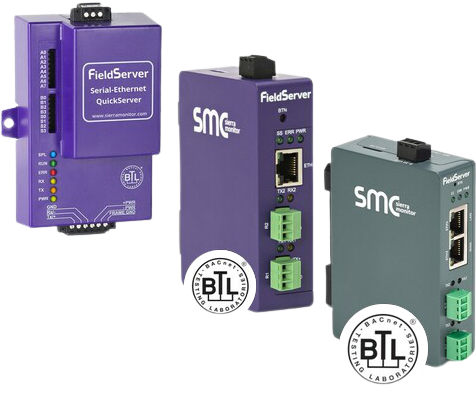Evolution of Temperature Measurement and Scales
Temperature measurement is a relatively latest concept. In the early days, people only knew the elemental difference between hot and cold since there was no practical way to measure changing degrees of heat. In the year 1597, the first effort was made by an Italian astronomer named Galileo Galilei to measure temperature. He developed a very basic device called a water thermoscope by employing a sealed jar and a long glass tube filled with air and water. To make this device workable, the glass tube was placed inverted in the jar and heat energy was supplied to the jar. Due to heat, the expansion of air took place inside the tube which forced the liquid in the tube to rise up. The jar was subjected to different temperatures by either adding or removing heat energy and with every change in temperature, the level of water demonstrated relative changes. However, this technique was incapable to measure temperature indirect manner.
After many years, an Italian physician named Santorio Santorio made improvements in Galileo's thermoscope design by attaching a numerical scale to the device. This enhanced thermoscope design laid the basis for development of today's liquid-filled thermometers like mercury thermometers and alcohol thermometers.
Temperature Scales
"Temperature is a measure of the amount of heat energy possessed by an object. Because temperature is a relative measurement, scales based on reference points must be used to accurately measure temperature." There are three scales of temperature which are widely applied in modern- day science and industry. They are:
- Fahrenheit temperature scale
- Celsius temperature scale
- Kelvin temperature scale
Kelvin temperature scale is not as much popularly used as the Celsius and Fahrenheit scales. However, it finds its major application in the field of scientific researches.
Fahrenheit Temperature Scale
This scale was developed by a renowned physicist named Gabriel Daniel Fahrenheit in the year 1724. It is a non-metric temperature scale upon which temperature readings are represented in degree Fahrenheit (ºF). The Fahrenheit scale is most popular in the United States. "Fahrenheit temperature scale is a scale based on 32 for the freezing point of water and 212 for the boiling point of water, the interval between the two being divided into 180 parts."
Celsius Temperature Scale
This temperature scale was devised by a Swedish astronomer named Anders Celsius in the year 1742. It is a metric temperature scale. It is also sometimes referred to as the centigrade temperature scale where centi means one hundred and grade means degrees. Temperature readings on this scale are represented in a degree Celsius (ºC). "The degree Celsius (°C) scale was devised by dividing the range of temperature between the freezing and boiling temperatures of pure water at standard atmospheric conditions into 100 equal parts".
Under this scale, the freezing point of water is 0 ºC whereas its boiling point is 100 ºC. For carrying out scientific experiments, the Celsius scale is preferred over the Fahrenheit scale owing to its better compatibility with the base ten format of the International System i.e. SI of metric measurement. This temperature scale is widely in practice in nearly all parts of the world except the United States.
Kelvin Temperature Scale
Kelvin temperature scale was established by a Scottish physicist named Lord William Kelvin in the year 1854. "It is defined as 1/ 273.16 of the triple point (equilibrium among the solid, liquid, and gaseous phases) of pure water. Such a scale has as its zero points absolute zero, the theoretical temperature at which the molecules of a substance have the lowest energy." It is considered the fundamental unit for temperature measurement in the thermodynamics field. It is regarded as an international standard for scientific temperature measurement. This temperature scale enables the simple expression of numerous physical laws and formulas. The Kelvin scale is an extended version of the Celsius scale. Temperature readings on this scale are represented as positive Kelvin numbers. No negative numbers or degrees Kelvins are used for this scale. Under this scale, the freezing point of water is 273.15 Kelvins whereas its boiling point is 373.15 K. Hence, just like Celsius scale, the Kelvin scale also exhibits a difference of 100 degrees between the freezing and boiling points of water. Kelvins are extremely useful for the measurement of very low temperatures involved in scientific experiments.
TEMPERATURE SCALE CONVERSIONS
We can easily convert one temperature scale into another by means of few calculations which are given below: Temperature conversions between Kelvin and Celsius temperature scales can be performed with the help of following equations:
- Kelvin (K) = Degree Celsius(°C)+ 273.15
- Degree Celsius(°C) = Kelvin(K) – 273.15
Temperature conversions between Fahrenheit and degree Celsius can be done via the following formulas:
- Celsius (°C) = 5/9(F – 32)
- Fahrenheit (°F) = 9/5C + 32
Did you know that we also do BACnet Integration Solutions?
Chipkin has BACnet solutions for almost every situation. We have over 20+ years of experience in BACnet integration, check out our BACnet Products:

References
- Temperature Measurement: http://www.visionlearning.com/library/module_viewer.php?mid=48
- Fahrenheit Scale
- Celsius Scale
- Visionlearning: http://www.visionlearning.com/library/module_viewer.php?mid=48
- Abyss.uoregon: http://abyss.uoregon.edu/~js/glossary/temperature_scale.html